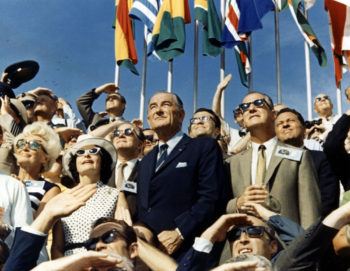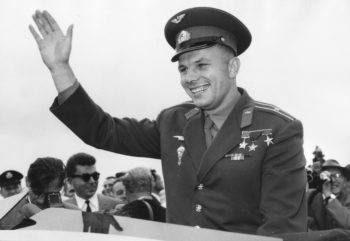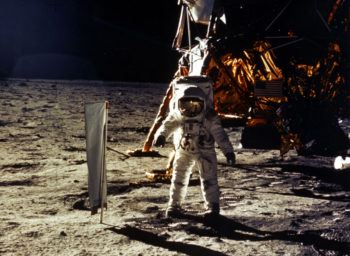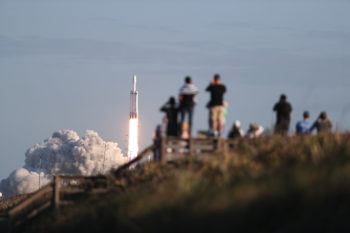Would Apollo 11 have happened without Russia?
A Texas A&M technology historian explains why the 1969 moon landing could have been delayed – or not happened at all – without the Soviet Union’s space ambitions.
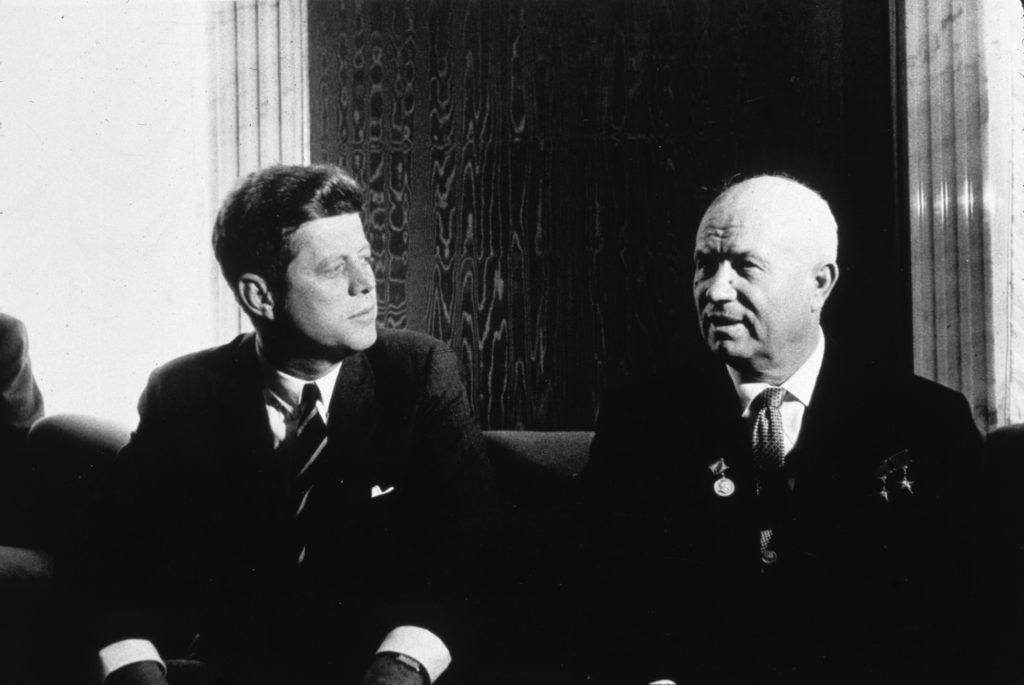
By Sam Peshek, Texas A&M University Division of Marketing & Communications
Johnathan Coopersmith, a historian of technology in the Texas A&M University College of Liberal Arts, discussed the space race with Russia and how it spurred the United States into putting a human through the Apollo 11 mission 50 years ago this week.
His research on the electrification of Russia from 1880-1926 gives him a unique historical perspective on what led to the historic moon landing
He also shares what history can predict about space races with other nations in the future, remaining technological hurdles in space exploration and why a demilitarized solar system may be a thing of the past.
This interview has been edited for clarity and length.
When did the space race really begin to take off?
The U.S. government announced in July 1955 that it would launch a scientific satellite in 1957-1958 as part of the U.S. contribution to the International Geophysical Year. The USSR made a similar announcement. Left unmentioned was the secret U.S. effort to build surveillance satellites, which the Eisenhower administration considered far more important. Space advocates had plans, but not the desired resources.
The worldwide public excitement over the success of the Soviet Union’s Sputnik launch on October 4, 1957, surprised many people, including the Soviet government, which quickly realized the propaganda potential. The real U.S. freak-out did not occur until Sputnik II a month later, which was much heavier and carried a dog, Laika.
Just like when the U.S. dropped a nuclear bomb on Nagasaki in 1945, the ability to do something the second time – to demonstrate the first technological feat was not a fluke – was as consequential, if not more consequential, than the first event.
But between 1957-1958, President Eisenhower was basically saying “slow down,” that the Soviet launch is not the end of the world. It’s a demonstration of technological accomplishment, but let’s not waste our money. At the same time, he was pursuing secret efforts started before Sputnik to launch reconnaissance satellites.
The launch of Sputnik I and Sputnik II frightened many Americans. What was their answer to Eisenhower’s relaxed response?
In 1958, Democrats in Congress begin to use Soviet space accomplishments to claim that the Eisenhower administration was not adequately funding the military and science and technology, so space became a domestic political issue with the Democrats attacking the Republicans. Lyndon B. Johnson was the majority leader in the Senate at the time and took on a leading role in saying the administration was not responding appropriately to this threat. It became part of the campaign rhetoric of the 1958-60 elections. During the 1960 presidential campaign, John F. Kennedy said space exploration was the future and we intend to be part of it.
NASA was established in 1958 by the reluctant Eisenhower administration. One of the contributions of Richard Nixon was to make NASA a civilian space agency, not a military agency. Part of the public diplomacy was claiming that a civilian organization was proof of the capitalist democracy’s superiority as opposed to the secrecy of the Soviet Union.
How did things begin to change once space exploration advocates JFK and LBJ took office in 1961?
Two events happened in 1961. First, the Soviets launched the first man into orbit, Yuri Gagarin on April 12. The second was the disastrous Bay of Pigs invasion of Cuba a week later, which had been planned by the Eisenhower administration and carried out by the Kennedy administration. Kennedy, the young president of the future, looked like he was out of his league and wrote to LBJ asking what space goal the U.S. could set that would restore public faith and score a public relations victory. What came out of those discussions was the administration going to Congress to say, “if you give us the resources, we can land a man on the moon by the end of the decade.” That laid the groundwork for the famous “we choose to go to the moon” speech at Rice University.
The Apollo program cost $20-26 billion in the 1960s and 1970s, or $240-288 billion today, depending on what you include. At its peak, NASA consumed 4.5% of the federal budget. In comparison, NASA’s budget today is $21 billion or 0.5% of the federal budget.
Let’s say Russia never had any space ambitions and dedicated those resources to something else. Would America have made it to the moon in 1969?
No. NASA’s pre-Apollo assumption was the Von Braun paradigm, which envisioned a series of escalating stages of growing complexity and infrastructure development: a man in space, a space station orbiting the earth, and only then sending astronaut to the moon. This was more of a marathon than a sprint.
But it really was a space race. Both sides were doing this to demonstrate the superiority of their systems and the audiences were both domestic and international. It was the superiority of capitalism over communism and the government working for you, the taxpayer.
The U.S. announced a plan in 1961 and the Soviets did not pull together a plan until 1966. Even then, it was fairly weak.
The Soviets proclaimed there never was a moon race, but there was. It wasn’t until 1989, under Gorbachev’s policy of glasnost (openness), that the Soviets revealed their one-person lunar landing craft and admitted there actually had been a space race, after all.
Is it safe to say there’s no Apollo 11 moon landing in 1969 without a space race with the Soviet Union?
Yes. Apollo was an amazing technological accomplishment based on a specific political goal of choosing a space accomplishment that would be significant and demonstrate American technological superiority.
You were researching the early electrification of Russia at Moscow State University near the tail end of the Soviet Union and then published a book on it in 1992. Do you think that history from 1880-1926 foreshadowed anything about the country’s space ambitions?
The Soviets had space enthusiasts and Marxism had a strong element of technological utopianism. The USSR was a prominent promoter of state technologies and technologies developed to promote state goals since the 1920 GOELRO plan for national electrification: “Communism is Soviet power plus the electrification of the whole country.”
How did each superpower fare as the space race progressed throughout the 1960s?
Ironically, the United States, the country proclaiming it was the land of individual initiative and free enterprise, in 1961 began successfully mobilizing hundreds of thousands of people in a state-directed program to put a man on the moon.
Meanwhile the Soviet Union, the country proclaiming it was the land of “scientific communism,” which was more efficient than capitalism because it eliminated unnecessary and wasteful competition, could not overcome the fiefdoms of its space engineers who feuded and did not establish a single plan until 1966, and it rested on unproven rocket technology.
What did the Apollo 11 moon landing do for the space race?
It ended the space race with an American victory. And it also ended major political support for people in space. As NASA painfully discovered over the next decades, no American president, regardless of party, wanted to be known as the person who stopped American astronauts from reaching space. But no American president or Congressional majority wanted to commit the tens, if not hundreds, of billions of dollars needed for creating a major human presence in space.
Was there ever a point where the space race showed signs of slowing down, altering or ending altogether?
Almost as soon as he announced the Apollo program, Kennedy tried to step back after he realized it was really expensive. One of the neat what-ifs is what would have happened if Kennedy had survived the assassination attempt. At the time his administration was in secret discussions with the Soviet Union to say “hey, maybe we can cooperate on this,” and publicly floated the idea to the United Nations General Assembly in 1963.
What happens after he died was a country coming together to support a martyred president’s goal, because it’s what he would have wanted. It kept the momentum going. So if Kennedy had lived, would Apollo have lived in the form that it did? We can speculate a lot, but we really don’t know.
Looking ahead with tensions between the Russia and the United States returning to Cold War levels and the Trump administration declaring ambitions to go to Mars, is a new space race on the horizon?
You’ll need to look at Chinese plans, not Russian plans. And the real participants in that may be India and China. While governments are still essential, one of the big questions is how successful commercial players will be.
One of the major accomplishments of the 1960s and 1970s was keeping space free of weapons and actual physical conflict. Nobody wanted to see weapons of mass destruction in orbit. Space was militarized in a sense: The militaries of many countries have launched reconnaissance, navigation, communications, weather, geodetic, and other satellites.
Even today, the military and economy are very dependent upon space and you can see that heating up with more players. Every intelligent country that ever wanted to attack or defend against the U.S. would be thinking “if I can destroy or degrade any of the U.S. space assets, that would hurt the U.S. more than it would hurt me.”
Space has been militarized from the beginning, but you’re going to see some more players. You have other governments that launch their own satellites that have their own plans and you have a wave of space businesses like SpaceX, Blue Origin and Virgin Galactic Tours. Nanosats are also really changing the dynamics of building a satellite and operating in spaces.
These are some of the operational, not political, challenges: What are the rules of engagement, the notification of other players, and keeping space safe and from getting congested?
If we do find ourselves in another space race, what do you think it will do for aerospace, military and commercial technology? For society?
It had to be governments in the space race in the 60s and 70s because only they could afford it. Launching satellites was a tremendous challenge and extremely expensive. It’s still not at the point where space flights for the masses would be easy.
The major goals of space advocates should be to significantly reduce the cost of reaching orbit and operating in space. If you want to feel rich, think of how much it would cost to send you into earth orbit. Current costs are about $5000-10,000 a pound. SpaceX and Blue Origin will reduce that greatly, but large-scale exploitation and exploration will come when we lower the cost to $100-500 a pound. In contrast, a recent flight to Europe cost $6-10 per pound of me.
This story was originally posted here.

